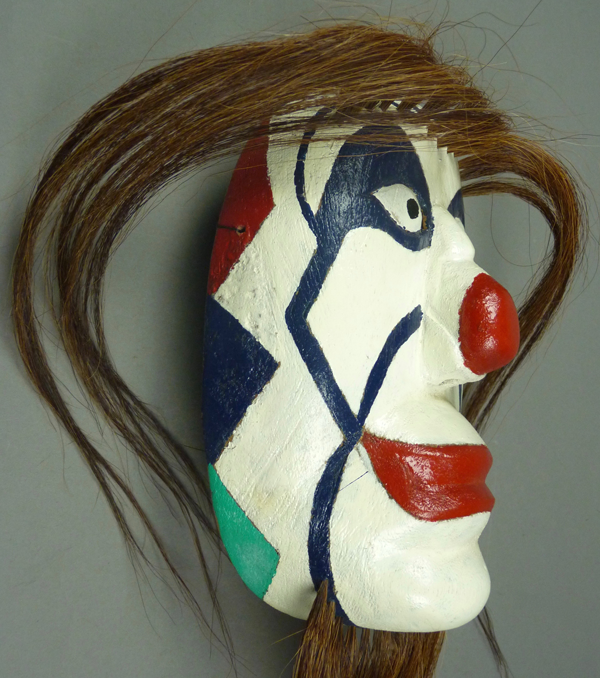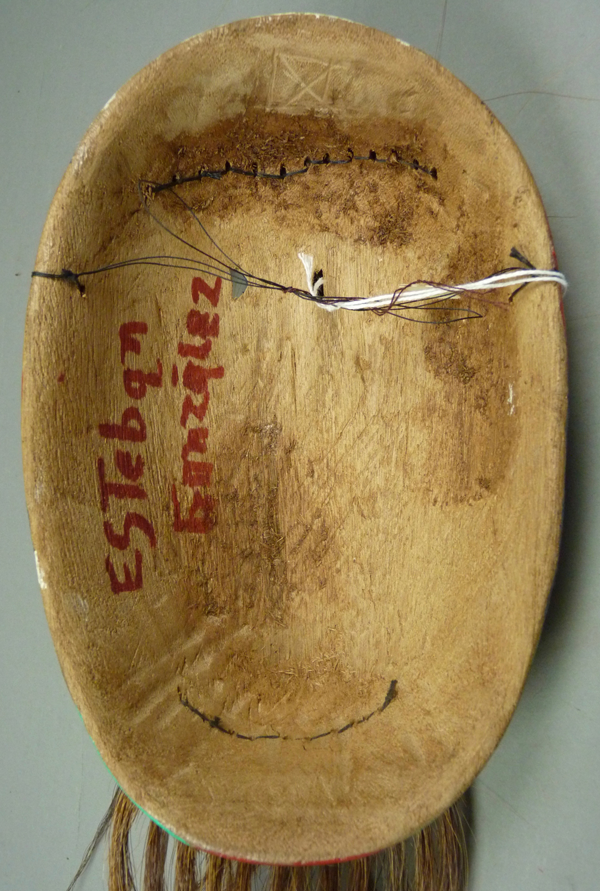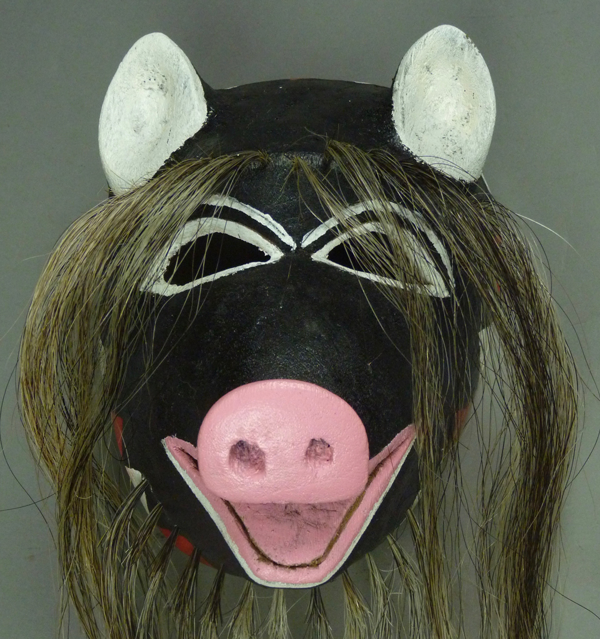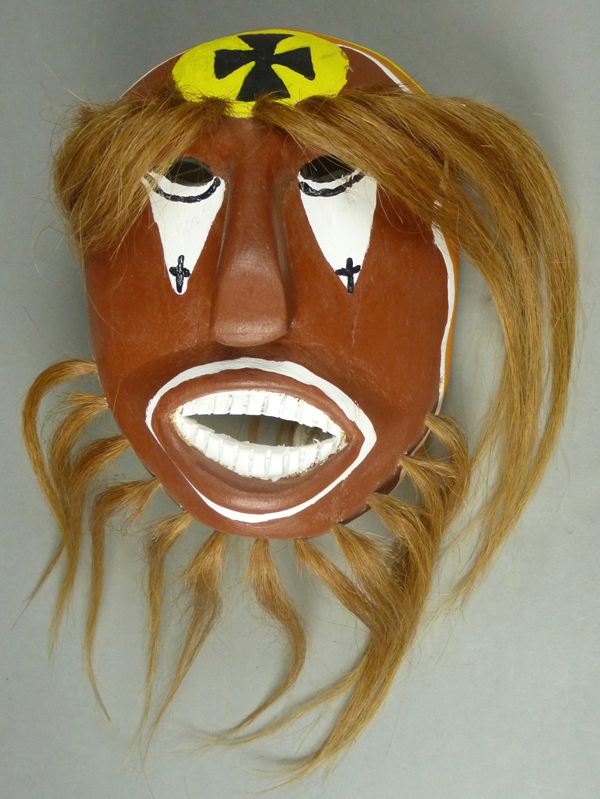Today, sweeping up some of the last of my unposted masks from the coastal Mayo towns, I am starting with two attractive Pascola masks by Estaban González Leva, which I bought in 1995 from INAH, a government museum shop in Mexico City. These are modern and sophisticated in style, and they lack forehead crosses. Due to the long hair, I assumed that these were Mayo masks, even though a tiny tag on the Pig declared that it was Yaqui. I know nothing more about this carver, so I can’ t even say whether they are definitely Yaqui or Mayo. I would think that these were carved for sale to dancers or collectors.
Then I am adding a trio of masks by Juan Nieblas that I bought from Tom Kolaz in 2007. At that time, Juan lived in Santa Bárbara, a tiny Rio Mayo village in the Municipio of Alamos, Sonora. In contrast to the first two, these masks are more traditional in design, but brightly painted. Tom purchased these three masks from the manager of a Pascola group, during a fiesta; they were to be danced, but Tom bought them before this could occur.
The first of the masks by Estaban González Leva appears to have a clown’s face (or the face of an evil character in a Batman™ movie).
Note the long brow hair and the extremely long beard, in the tradition of Sinaloa Mayo masks and characteristic of recent Rio Mayo masks.
There is a colorful rim design that could be found on a Yaqui or Mayo Pascola mask.
This is the nose of a clown (payaso).
There is no forehead cross.
Nor is there a chin cross.
This mask is 8¾ inches tall, 5½ inches wide, and 3 inches deep.
There is a Yaqui style cross carved on the inside of the forehead of this mask. There is not clear evidence of staining from use, but the cross on the back makes one wonder if it might have been danced after all.
The second mask by Estaban González Leva has the face of a pig. One usually sees this face on Yaqui masks such as those of Cheto Álvarez.
There is no forehead cross.
The rim design does remind one of Yaqui masks.
And as a matter of fact, the hot pink paint on this mask was also favored by Cheto Álvarez.
However, the mouth was hollowed out by the artist, a detail that I have never seen on a Yaqui Pig Pascola mask.
This mask is 8 inches tall, 5¾ inches wide, and 4¼ inches deep.
There is no staining from use. However, also note the very thin walls of this mask, and of the last, the work of an excellent carver.
Here is the first of three masks by Juan Nieblas, who was definitely a Rio Mayo carver. This mask and the two that follow were intended to be danced in 2007, had they not been purchased from the dance group by a collector.
This mask has a traditional design.
The forehead cross is flanked by triangles painted in contrasting colors.
There is no chin cross.
This mask is 8 inches tall, 5½ inches wide, and 4 inches deep.
If there is any staining from use, it is minimal.
The second mask by Juan Nieblas is maroon in color.
There are crosses on the triangles under the eyes.
There is a simple rim design of painted lines in contrasting colors.
There is a traditional forehead cross.
This mask is 8 inches tall, 5¾ inches wide, and 4 inches deep.
There is no indication of staining from use.
The third mask by Nieblas is orange in color. Is this meant to represent a Caucasian complexion?
By now we have seen many Rio Mayo masks with extended tongues.
There is a discontinuous rim design of painted triangles, another very familiar element.
This forehead cross is much like the last.
This mask is 7½ inches tall, 5 inches wide, and 3¼inches deep.
There is no staining from use. By now you may have noticed that Juan’s masks have a characteristic appearance, front and back, and that the hair bundles are apparently glued in place, rather than stitched or pegged.
Next week we will look at some masks from Vado Cuate, a Rio Mayo town that is far upriver from the coastal towns.
Bryan Stevens



























